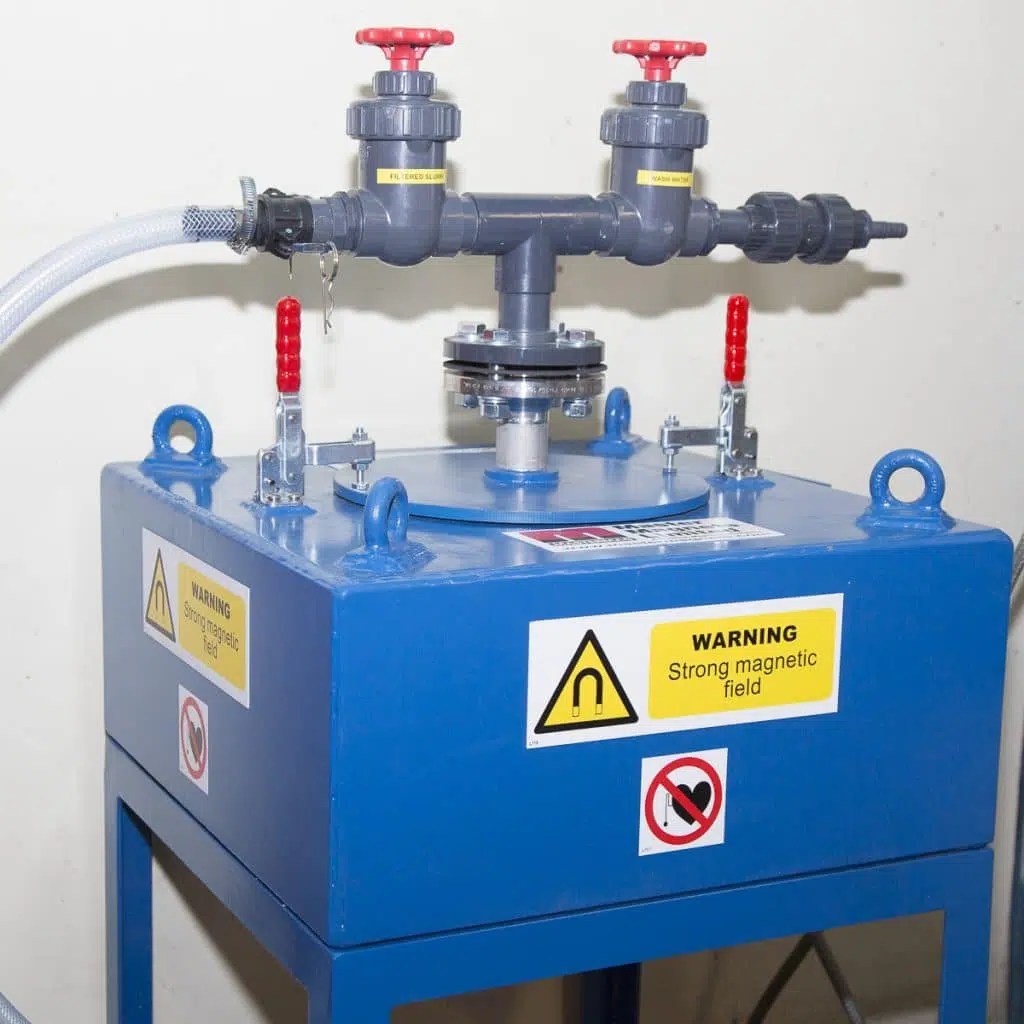Mineral Processing Lab High Intensity Electromagnetic Filter
By Paul Fears | 28 January 2019
A high intensity Electromagnetic Filter has expanded the mineral testing capabilities in the Bunting-Redditch mineral processing laboratory. The Electromagnetic Filter is designed to remove fine iron and weakly magnetic materials from mineral slurries and ceramics slips and glazes. The new equipment expands the extensive range of high intensity magnetic separators already used in the test laboratory.
- Technical Product Information: ElectroMagnetic Filter

Electromagnetic Filter Technology
The Electromagnetic Filter is designed to project a strong magnetic field into the centre of an electromagnetic coil. The centre is hollow and fitted with a matrix. The matrix intensifies the magnetic field. Slurry is fed up through the matrix at a governed rate and magnetically susceptible minerals and particles are attracted to the intense magnetic field on the points of the matrix. Once the matrix is loaded with magnetics, the feed is stopped and the magnetic field is turned off. Water is then flushed through the matrix to clean away the captured magnetics.
Continuous processing occurs when two Electromagnetic Filters are installed and operated in a flip-flop arrangement. When Electromagnetic Filter A is cleaning, B is processing and visa-versa.
Processing Mineral Slurries
The Electromagnetic Filter is an environmentally-friendly mechanical process. The separation capabilities are often similar to flotation without the use of chemicals. Successful applications include the purification of silica sands for the glass industry as well as feldspar and ball clay for the ceramics industry.
Controlled tests in the laboratory confirm separation capabilities and provide the basis for project guarantees.
Processing Ceramic Slips and Glazes
Low intensity Electromagnetic Filters are a common feature of most ceramic plants. The higher intensity versions enable the capture of very fine magnetics as well as coarser magnetic particles. Successfully removing the magnetics reduces product defects and improves the whiteness of glazes.
“We have one of the most comprehensive high intensity magnetic separator laboratories in the world,” said Adrian Coleman, the General Manager of Bunting-Redditch. “Customers are able to send material to test in both a dry and wet state. They can then evaluate the best separation option.”
Related Mineral Processing Technical Articles
Magnetic Separators – Mineral Processing Laboratory

Bunting-Redditch has one of the most comprehensive magnetic separation mineral processing testing laboratories in the world. Their Laboratory Technicians have decades of experience in mineral processing. Controlled tests ensure that the most suitable and cost-effective machinery is recommended for each application. The laboratory is equipment with a wide range of equipment including:
- Smaller scaled versions of industrial Magnetic Separators. This equipment is used to accurately scale up to industrial capacities and calculate performance guarantees including:
- Dry Magnetic Separators:
- Wet Magnetic Separators:
- X-Ray Fluorescence and X-Ray Diffraction analysis are available for chemical assay and mineralogical identification to aid the development of a viable process route for each application;
The new Electromagnetic Filter further expands those testing capabilities.
For further information on our range of magnetic separation equipment designed for purifying ceramics and non-metallic minerals, or to arrange sample tests in our laboratory, please contact us on:
Email: Gordon Kerr at GKerr@buntingmagnetics.com
Telephone: +44 (0) 1527 65858
All photographs and video taken by Paul Fears Photography
To keep up to date with our news and technical reports, please follow us on social media